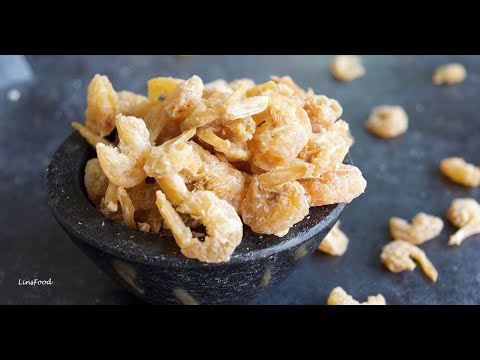Estimated reading time: 3 minutes
Table of contents
Pad Thai must be an all time favourite Thai export! We absolutely love it, it has so many levels of flavours hitting you all at once – hot, sour, sweet, every mouthful is a joyful experience! If you get it right though.
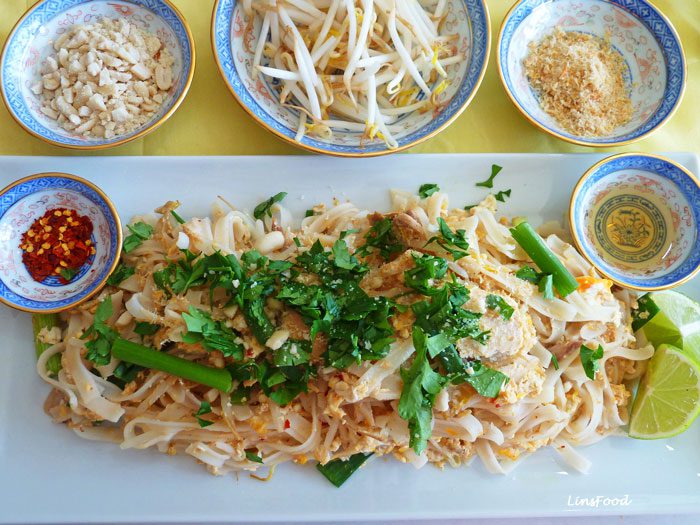
I’ve been subjected to cloyingly sweet Pad Thais far too often, that I always say a prayer when ordering it while dining out!
Pad Thai Ingredients
Some specialist ingredients here – dried shrimp is the first one. Click to read more. This, you’ll find in Oriental stores.
Pad Thai noodles (dried), tamarind, fish sauce (nam pla), palm sugar – found in major supermarkets.

How to use Dried Shrimp
Equipment
- kettle for hot water
- bowl for soaking the dried shrimp
- pestle and mortar if you're a traditionalist
- small chopper
Ingredients
- Tbsp dried shrimp or more as your recipe calls for
- hot water, enough to cover the shrimp
Instructions
Soak the Dried Shrimp
- Put the kettle on and place the dried shrimp in a bowl.
- Pour very hot water over the dried shrimp to completely submerge them. Cover, and leave to soak for 10 minutes.

Chopping/Flossing
- Follow the instructions as in your recipe, but a general guide is:If using as part of a spice paste, just drain the soaked shrimp (no need to rinse) and add to the chopper or mortar and chop or pound away to get your paste.

- Some recipes call for the shrimp to be pounded to a coarse state. You can do this with a pestle and mortar, or use a chopper, like I prefer.

- If you want to use the dried shrimp as a garnish or topping, place them in a chopper and pulse until they are shredded and resemble floss.

Video

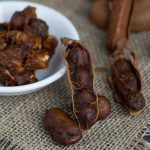
A note on the dry noodles. Always err on the side of caution and undersoak if you’re not sure as you can always add water to the cooking to soften them but if they’re too soft to begin with, you’ll end up with stodgy noodles!
For an impressive presentation, serve as in main pic, side portions of lime, peanuts, beansprouts, chilli flakes and fish sauce, for guests to help themselves to.
Vegetarian Pad Thai
Dried Shrimps are an essential ingredient in Pad Thai, they lend a strong umami flavour to the noodles. So what does one do? Replace the dried shrimps with shiitake mushrooms, which, will impart its own umami notes to the noodles. What I like to do for my vegetarian friends is, besides adding them to the noodles while cooking, I also grill a handful of shiitake, then grind them up in a chopper and sprinkle them all over the noodles, in place of the dried shrimp floss.
Another substitute for the floss is crumbled Nori, that’s the roasted seaweed used to wrap sushi.
Vegetables – use any noodle friendly vegetables like capsicum (bell pepper), green beans, sugarsnap peas, etc.
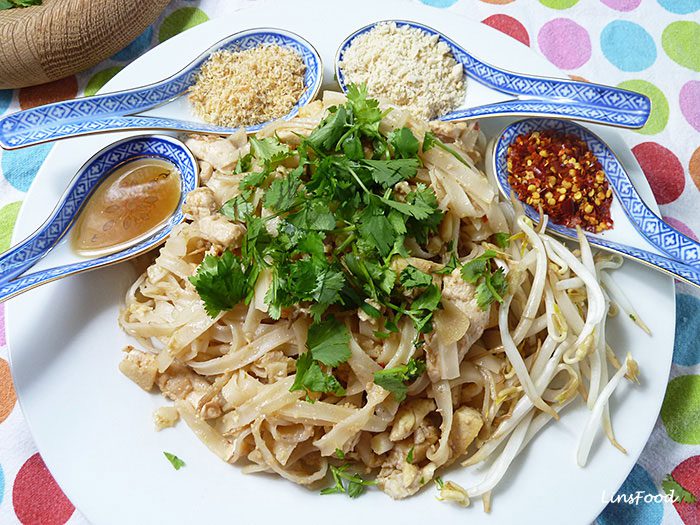
Pad Thai Sauce
A good Pad Thai depends on a good pad thai sauce. Don’t be tempted to buy jar stuff – it’s all rubbish!
I usually make lots and keep it in the fridge for another day, up to a month.
And usually, my sauce is made with 1/2 cup tamarind, 1/2 cup fish sauce and a smaller amount of palm sugar. Traditionalists will use the same amount of sugar to the sauces but I hate a cloyingly sweet pad thai!
Shall we get our aprons on?
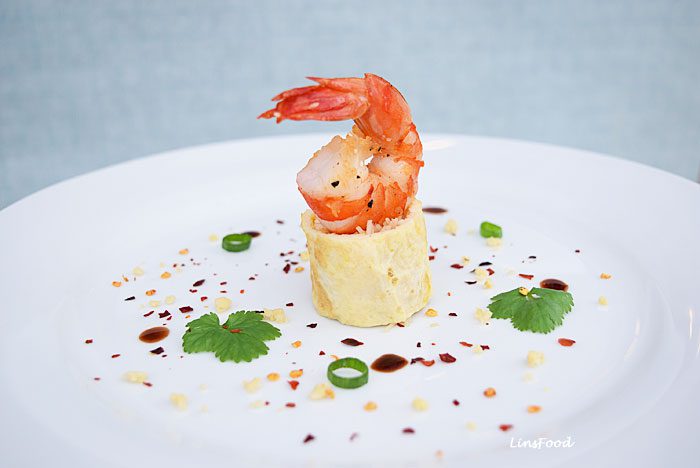
If you like the recipe, don’t forget to leave me a comment and that all important, 5-star rating! Thank you!
And if you make the recipe, share it on any platform and tag me @azlinbloor, and hashtag it #linsfood
Lin xx

Pad Thai (everyone’s favourite Thai Noodles!)
Ingredients
- 200 g dry pad thai noodles -soaked according to packet instructions
- 2 handfuls of beansprouts
- 1 garlic clove chopped
- 2 handfuls tofu firm and sliced into bitesize pieces (see pic)
- 2 handfuls about 60g prawns or meat of your choice
- 2 eggs
- 2 tbsp roasted peanuts roughly ground
- 1 tbsp dried shrimp ground, resembling floss (see above pic)
- 1 tbsp pickled turnip optional, won’t affect the final taste much
- 1 tbsp chopped spring onions scallions
- 3 tbsp veg or peanut oil
- to serve – fresh lime chilli flakes, ground peanuts
Pad Thai sauce (about 2 portions)
- 125 ml tamarind juice (made with 2 heaped Tbsp tamarind pulp & 125 ml water)
- 125 ml fish sauce
- 80 g palm sugar
- 1 tsp chilli powder
- 1 tsp chilli flakes
Instructions
Pad Thai Sauce
- This is fairly quick and can be made way in advance and kept in the fridge. Be warned, if you’re not used to the smell of fish sauce, my kids say it stinks!
- Put all the sauce ingredients apart from the chilli into a saucepan and bring to a gentle simmer. Add how much chilli you want, depending on how hot you like it. Taste it (yup, you’ll get used to it!) and make sure that it’s hot enough. Don’t put too much chilli in at once. If you don’t have palm sugar, add a tbsp more of white sugar, if that’s what you’re using. That’s it, it’s done!
Cooking Pad Thai
- Heat the oil in a large wok on medium high heat and cook the tofu for a minute, stirring constantly (and any meat, if using).
- Add the garlic, a tbsp of pad thai sauce to flavour the tofu, stir, 10 seconds.
- Add the beansprouts, noodles and half a cup (100-120ml) of pad thai sauce, stirring vigorously to coat everything, 20 seconds.
- Add prawns now, if using. Another stir to coat and cook for 2 minutes.
- Push noodles to one side of wok, add the 2 eggs, scramble slightly and let it set for about 20-30 seconds. Then give everything a good mix.
- Make sure the prawns are done, turn the heat off, add the dried shrimp floss, pickled turnips and half the ground peanuts, give everything a quick stir to mix thoroughly.
- Squeeze some fresh lime juice, transfer to a serving dish or individual plates, scatter with spring onions and a little more peanuts and serve immediately.

